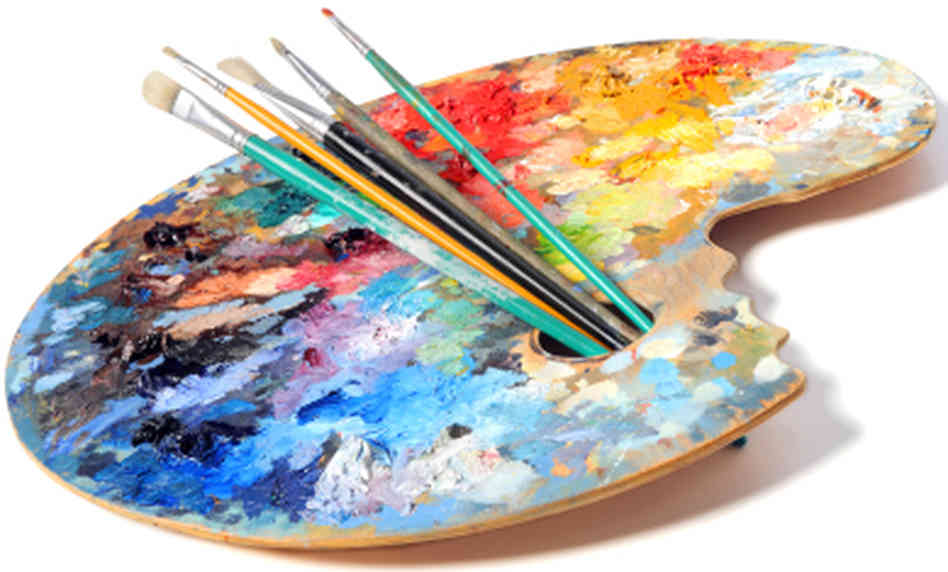The Function of Trump Art in Shaping Cultural Conversations Around Leadership
Looking Into the Diverse Globe of Artistic Expression: From Surrealism to Abstract Realistic Look
In the world of imaginative expression, from the dreamlike landscapes of surrealism to the elaborate play of light and type in abstract realistic look, artists have constantly pressed the limits of creative thinking and imagination. As we discover the complex world of art, we are offered with a tapestry of styles, strategies, and viewpoints that challenge our understanding and provoke consideration.
Surrealism: Letting Loose the Subconscious
Surrealism, a progressive artistic activity of the 20th century, looked into the depths of the subconscious, unveiling a globe of dream-like imagery and unconventional juxtapositions. Led by musicians like Salvador Dali, René Magritte, and Joan Miró, Surrealism looked for to test the standard methods of comprehending and seeing art. With techniques such as automatism and dream analysis, Surrealist musicians intended to use the unconscious mind to reveal hidden facts and desires.
One of the crucial elements of Surrealism was the emphasis on the unreasonable and the astonishing. By integrating unforeseen aspects in their works, Surrealist artists intended to develop a feeling of disorientation and surprise in the viewer. This disturbance of reasoning and reason was meant to provoke a much deeper expedition of the subconscious and the secrets of the human mind.
Abstract Realism: Redefining Assumption
Testing conventional artistic boundaries, Abstract Realistic look redefines understanding with the fusion of recognizable components with abstract forms. This ingenious method to art combines the representational precision of realistic look with the innovative freedom of abstraction, providing customers an one-of-a-kind aesthetic experience that triggers them to question their perception of fact.
In Abstract Realism, musicians aim to capture the significance of their subjects while also instilling their deal with a sense of deepness and complexity via abstract aspects. By mixing the knowledgeable about the unknown, these artists welcome target markets to engage with their items on multiple degrees, encouraging them to discover the nuances of shade, form, and structure.
Cubism: Fragmentising Fact
Utilizing geometric types and fragmented perspectives, Cubism reinvented the artistic representation of fact in the early 20th century. Established by Pablo Picasso and Georges Braque, Cubism sought to test traditional ideas of viewpoint and depiction. By breaking down items and numbers into geometric shapes and providing them from several perspectives concurrently, Cubist musicians intended to catch the essence of the subject as opposed to its actual look. This method not just deconstructed reality but additionally stressed the monotony of the canvas, leading the means for future abstract art movements.

Cubism can be categorized right into two primary stages: Analytical Cubism, identified by monochromatic color pattern and detailed, fragmented kinds; and Synthetic Cubism, which integrated collage elements and brighter colors into the structures. With these unique phases, Cubism influenced not only painting yet additionally style, design, and sculpture. trump art. Its effect resounded throughout the art globe, motivating artists to explore brand-new methods of representing the globe and interpreting around them
Expressionism: Emotions on Canvas
Checking out the depths of human feelings via expressive and dazzling brushstrokes, Expressionism became an extensive artistic activity in the early 20th century. Unlike previous art movements that concentrated on portraying the external globe, Expressionism looked into the inner world of the musician's mind, aiming to stimulate raw feelings and provoke natural feedbacks from customers.
Expressionist artists, such as Edvard Munch, Egon why not try this out Schiele, and Emil Nolde, denied traditional concepts of beauty and realistic look for distorting form and shade to convey subjective sensations. Making use of exaggerated brushwork, vibrant colors, and distorted figures helped produce a sense of worry, alienation, or interest in their jobs.
Among one of the most famous examples of Expressionism is Munch's "The Scream," which captures the intense anxiousness and despair of contemporary life with its swirling, altered figure versus a blood-red sky. Via their mentally billed jobs, Expressionist artists check it out sought to test conventional imaginative standards and give a home window right into the rough depths of the human heart.
Contemporary Art: Evolving Point Of Views

Among the defining attributes of contemporary art is its consistent evolution and ability to adjust to altering cultural landscapes. Artists are increasingly integrating modern technology right into their method, obscuring the lines in between the physical and electronic worlds. This blend of tools enables innovative means of storytelling and engaging with target markets in a more interactive way.
Moreover, contemporary art typically acts as a system for social discourse, attending to pressing problems such as identification, national politics, and the environment. Artists are utilizing their job to trigger important conversations and prompt idea, dropping light on the intricacies of the world we live in. As point of views continue to develop, contemporary art remains a vibrant and significant pressure in shaping our social landscape.
Verdict
To conclude, the globe of creative expression encompasses a vast array of movements and designs, each with its very own special method to conveying meaning and feeling. From surrealism's expedition of the subconscious to abstract realistic look's redefining of from this source assumption, and from cubism's fragmentation of fact to expressionism's portrayal of emotions, art proceeds to progress and test perspectives - trump art. Contemporary art mirrors the ever-changing globe we live in, offering new means to translate and understand the intricacies of our truth
As we explore the diverse world of art, we are offered with a tapestry of styles, techniques, and ideologies that challenge our understanding and provoke reflection. Its influence resounded throughout the art world, inspiring musicians to discover brand-new means of translating and representing the world around them.